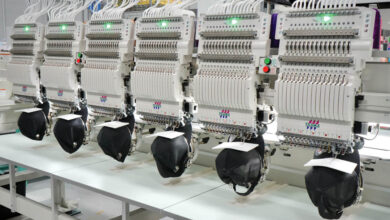
For the fifth article in this relationships series, let’s look at contractor-subcontractor relationships. In the apparel decoration industry, many of us can, do, and have ended up on both sides of the fence in this scenario, as both a subcontractor for other decorators and contractors utilizing a subcontractor’s services. In either case, when developing relationships of this sort, some key considerations can help make these relationships more efficient, less stressful, and more financially beneficial. Here are some of my suggestions to help you establish and maintain functional and rewarding relationships with these business partners.
One of the first things to do is establish open communication. Having open lines of communication can be vital to building and maintaining reliable and beneficial contractor-subcontractor relationships. If you are not aware or have not utilized such sources yet, a subcontractor serves as an extension of the contractor. Meaning you and your client, or they and their client, are dependent upon the output—meeting deadlines, honoring the established price, and the quality of the work are just a few of the areas where open communication is necessary.
Speaking freely, not meanly, rudely, or aggressively, but concisely and with understanding can help keep all parties in harmony and the customer satisfied. Not having good communication opens the door to revenue losses, backsliding with customer retention, and increasing stress levels for managers, employees, and others close to the situation. Set the tone initially so that you can take strides toward making this a reliable and sound relationship.
To further enhance a contractor-subcontractor relationship, there needs to be a firm understanding of both parties’ responsibilities. Establishing responsibilities helps reduce issues related to miscommunication and takes out any guesswork or misunderstandings. Doling out responsibilities exposes any gaps that need to be filled, allowing you the option to address them. Position both parties so that each sees how the other can be most beneficial to their system.
The last aspect to note when looking to build a stable contractor-subcontractor relationship is understanding the finances. This understanding allows the contractor to have easier, faster, more upfront, and less cumbersome communication with their client. It will enable both parties to be more confident and aware concerning their bottom lines, the payment methods, terms, etc. Being clear and transparent about the financials is a must for all successful business arrangements.
The ultimate goal of a contractor-subcontractor relationship is to establish trust. By establishing trust, you create that peace of mind, knowing that if a need arises, it can be covered. If you can engage in open dialogue when necessary and the numbers are an open book, you move toward establishing and maintaining a great contractor-subcontractor relationship.



